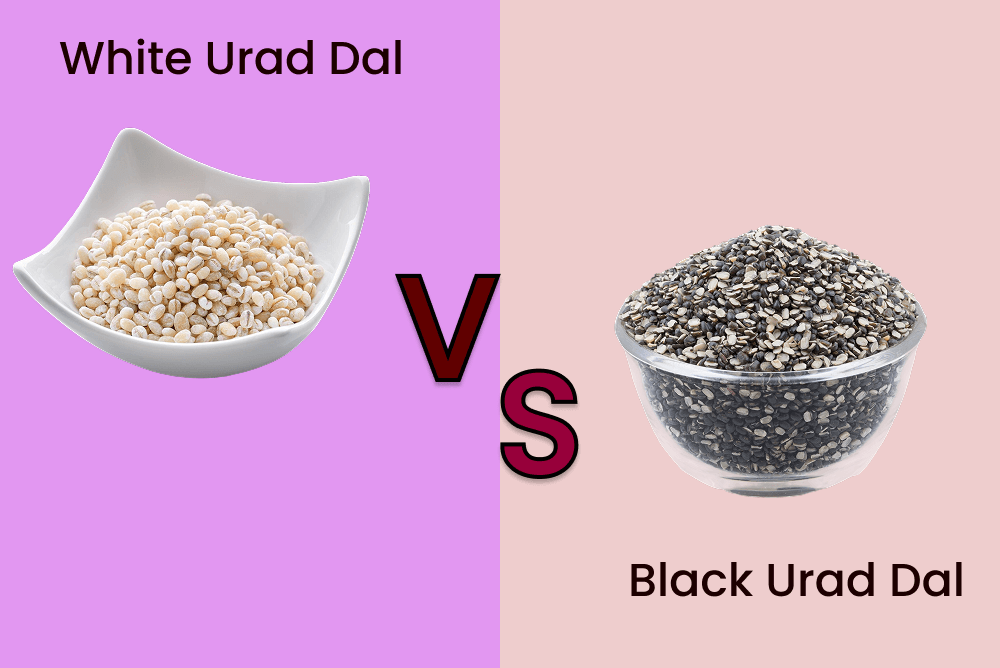You’ve seen them side by side in the grocery aisle — one pale and polished, the other deep black and rustic. Both are called urad dal, but they look so different! Ever wondered which one is healthier? Or why grandma insists on using one while your dosa recipe calls for the other?
Let’s dig into this delicious debate: White Urad Dal vs Black Urad Dal — which is better for you?
Why Urad Dal Deserves the Spotlight
Urad dal, also known as black gram, isn’t just another pantry staple. It’s been a trusted ingredient in Indian cooking and Ayurveda for centuries. High in protein, good for digestion, and filling too — it’s no wonder it’s used in everything from dal makhani to idli batter.
Ayurveda calls it "balya", meaning strength-giving. That’s some serious power packed into a tiny lentil!
Meet the Two: White vs Black Urad Dal
White Urad Dal
This is the split and skinned version. It’s light in color and soft in texture. It cooks faster and blends easily, making it perfect for smooth batters — think idli, dosa, or vadas.
Black Urad Dal
This is the real OG — whole lentils with their black skin on. It’s bolder, earthier in flavor, and richer in nutrients. You’ll often see it in heartier dishes like dal makhani or Punjabi maa ki dal.
So yes, both come from the same seed, but the processing makes a big difference in taste, cooking time, and nutrition.
Urad Dal Nutrition Comparison!
Let’s break it down simply:
-
Fiber: Black urad dal has more because of the skin. Great for digestion!
-
Protein: Both are rich, but black urad has a slight edge.
-
Iron & Calcium: Black urad dal wins — it's a natural mineral booster.
-
Digestibility: White urad is lighter and easier on the tummy.
So if you're looking for maximum nutrition, black urad is your buddy. But if you want something gentle and quick to cook, white urad is a great choice.
👉 Research from IJFANS confirms that urad dal is a powerhouse of protein, calcium, and iron — all essential for energy and bone health.
Health Benexfits: Black or White — What Does Your Body Need?
Black Urad Dal is great if you:
-
Need more fiber for digestion
-
Want something filling and rich
-
Are looking for strength and stamina support
-
Are cooking in colder seasons — it’s warm and grounding
White Urad Dal is better when you:
-
Want something lighter and easier to digest
-
Are cooking for kids, seniors, or people recovering from illness
-
Need a quick meal or smooth batter
-
Are in a warm season — it’s cooling and gentle
Ayurveda also recommends rotating foods with the seasons and your dosha (body type). For example, if you’re Vata-dominant or it’s winter, black urad might support strength and warmth better. For Pitta types or summer days, white urad can be more calming.
Ayurvedic insights here: Easy Ayurveda
So… Which is the Best Urad Dal for Health?
There’s no one-size-fits-all answer. The best choice really depends on you — your lifestyle, digestion, season, and health goals.
✨ Trying to lose weight or manage digestion? Black urad’s fiber can help.
✨ Feeding little ones or the elderly? White urad is gentle and nourishing.
✨ Recovering from an illness? White urad is easier to process.
✨ Training hard or need more strength? Black urad for the win.
Smart cooking is all about matching your food to your needs. And with urad dal, you’ve got two amazing choices either way.
Final Scoop
White or black — urad dal is a winner in every form. The secret is knowing when to use which. Keep both in your pantry, listen to your body, and let the seasons guide you.
When you’re ready to stock up on high-quality, carefully sourced dals, check out Sri Sri Tattva. Great health starts with great ingredients.








